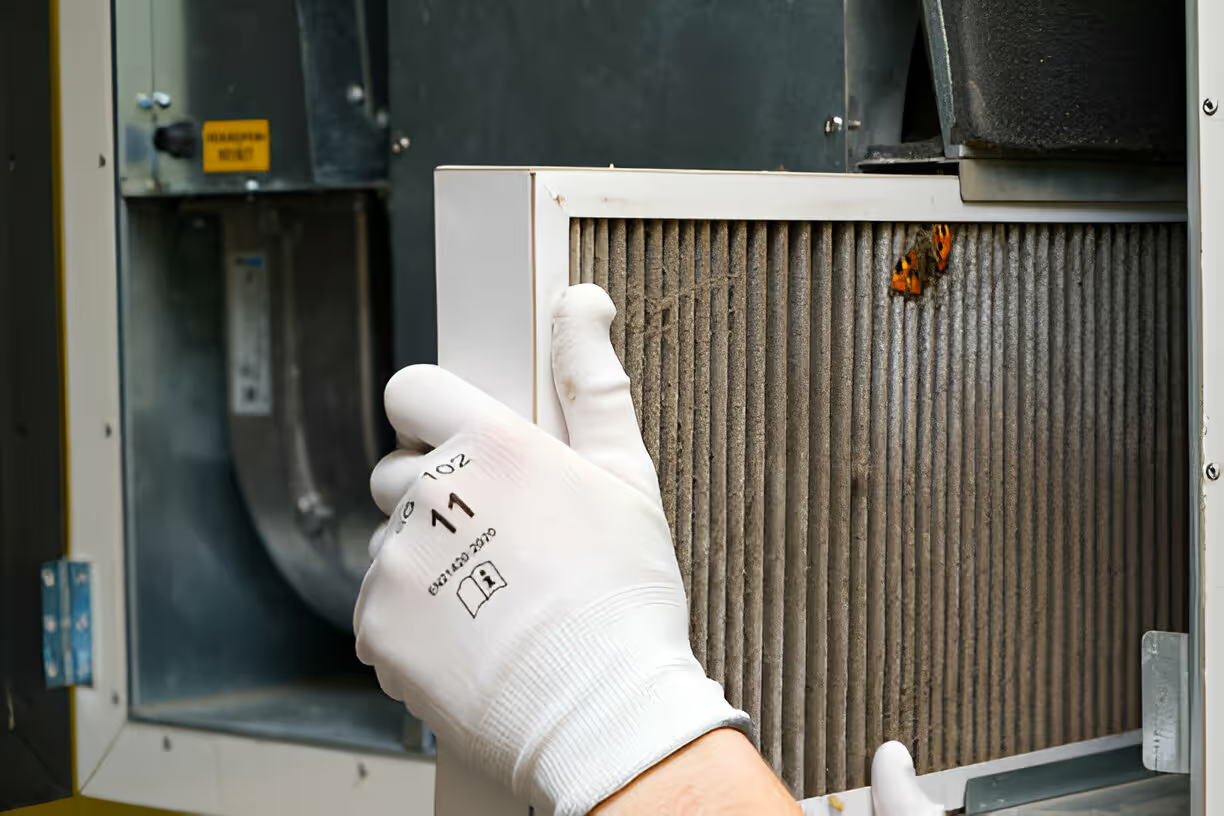Heating Repair in Mulberry, FL


Why timely heating repair matters in Mulberry, FL
Mulberry has a humid subtropical climate with warm, damp conditions most of the year and occasional cold snaps. Even brief periods without heat can cause discomfort, condensation, and thermostat cycling that stresses equipment. Common local factors that influence heating performance include:
- High humidity that accelerates corrosion and leads to condensate line blockages.
- Seasonal pollen and dust that clog filters and reduce airflow.
- Frequent power storms that can damage controls, capacitors, and electronic thermostats.
- Older systems originally designed for cooler climates that are less common here but still present in some homes.
Addressing heating issues promptly prevents bigger failures, reduces energy waste, and often avoids the need for premature replacement.
Common heating problems in Mulberry homes
Heat pumps and furnaces are the most typical systems we evaluate in this area. Common faults include:
- Heat pump not producing heat or short cycling during cooler nights
- Weak airflow from vents due to clogged filters, failing blower motors, or duct problems
- Thermostat miscalibration or communication failure with system controls
- Frozen outdoor coils or refrigerant imbalances on heat pumps
- Pilot light or ignition issues on older gas furnaces
- Strange noises from bearings, motors, or reversing valves
- Water or condensate leaks caused by blocked drain lines or failed pumps
- Electrical failures, blown fuses, or capacitor problems after storms
Boilers are less common in Mulberry homes but are still serviced when present; typical boiler issues include ignition failure, pressure loss, and zone valve malfunction.
How professional diagnosis and repair works
A clear, documented diagnostic process helps you make informed decisions. Typical steps include:
- Initial triage: Determine if the situation is an emergency (no heat during very low temps, gas smell, or electrical hazards) or a scheduled repair.
- Safety checks: Inspect gas lines, combustion, ventilation, and electrical systems before further testing.
- System-level inspection: Evaluate thermostat settings, airflow, filters, outdoor unit condition, and condensate drainage.
- Component testing: Check capacitors, contactors, compressor function, reversing valve (heat pumps), burners, ignition systems, and heat exchangers.
- Diagnosis and estimate: Offer a plain-language explanation of the problem, repair options, parts required, and an estimate for time and cost components.
- Repair and verification: Replace or repair parts, perform adjustments, and run the system through full cycles to confirm stability and efficiency.
- Documentation: Provide a list of replaced parts, maintenance suggestions, and warranty information for parts and labor.
This structured approach reduces repeat calls and ensures repairs are durable.
Typical components serviced
In Mulberry homes you’ll most often see service on:
- Heat pumps: compressors, reversing valves, thermostatic expansion valves, contactors, capacitors
- Furnaces: ignition systems, burners, heat exchanger, blower motors, limit switches
- Boilers: pumps, pressure controls, zone valves, flame sensors
- Thermostats: sensors, wiring, and programming issues
- Ductwork and registers: leaks, insulation, and airflow balancing
- Condensate systems: drains, traps, and condensate pumps
Repairing the right component quickly is essential for restoring comfort and preventing collateral damage.
Emergency vs scheduled repair processes
Emergency repairs are prioritized when there is a safety risk or the home cannot maintain a safe temperature. In general:
- Emergency response aims to stabilize the system and make temporary repairs if a full fix requires parts or extended work.
- Scheduled repairs allow for a full diagnostic, ordered parts, and a planned repair window to minimize disruption.
Typical estimated response times for Mulberry-based services are:
- Emergency calls: often handled within a few hours when safety or rapidly falling temperatures are involved
- Non-emergency, next-available scheduled repairs: commonly within 24 to 48 hours depending on parts availability and workload
These are general expectations; confirmation comes with the initial appointment scheduling.
Transparent pricing and warranty information
Clear pricing helps you evaluate options. Expect transparent estimates that break out:
- Diagnostic fee and whether it is waived or credited toward repair
- Labor time estimates and hourly or flat-rate labor structure
- Parts costs listed by OEM part number where possible
- Any disposal fees or supplemental charges for challenging access
Parts typically carry manufacturer warranties, and many service providers offer limited labor warranties for a stated period after repair. Ask about warranty transferability if you plan to sell the home, and request documentation for any replaced parts so warranty claims are easier to pursue.
Tips for identifying heating issues early
Spotting problems early reduces repair scope. Look for:
- Increased energy bills without increased usage
- Inconsistent temperature between rooms
- Unusual odors (musty or electrical) when the heat runs
- Frequent short cycling or repeated automatic shutoffs
- Visible frost on outdoor heat pump coils during cool weather
- Soot, yellow flame, or pilot light instability on gas systems
Regularly check and change filters, monitor vents for blocked airflow, and note drops in performance after storms.
Preventive maintenance and long-term benefits
Routine maintenance in Mulberry, FL keeps systems running efficiently in humid conditions. Key maintenance actions:
- Change or clean filters every 1 to 3 months
- Annual system tune-ups for heat pumps and furnaces before seasonal use
- Clear vegetation around outdoor units and ensure proper drainage
- Check condensate lines and drain pans for clogs
- Verify thermostat calibration and program schedules for energy savings
Benefits of proactive maintenance include fewer emergency repairs, longer equipment life, improved indoor comfort, and lower utility costs.
Final notes on decision-making
When deciding between repair and replacement in Mulberry, consider the system age, recurring problems, energy costs, and efficiency losses. Repairs extend useful life when components are isolated failures. Replacement becomes the smarter choice when multiple components fail, efficiency is poor, or the system is near the end of its expected service life. Accurate diagnostics, transparent estimates, and documented warranties are key to making a confident, cost-effective decision for heating repair in Mulberry, FL.
Service Areas


